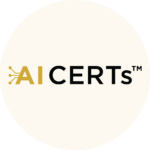
AI CERTS
7 months ago
AI-Driven Government Innovation: Revolutionizing Public Services
Artificial Intelligence (AI) is reshaping industries across the globe, and its potential for government innovation is no exception. By leveraging AI, governments can improve efficiency, reduce costs, and deliver more effective public services. AI-driven government innovation is becoming a reality as more governments embrace AI technologies to streamline processes, enhance decision-making, and better serve citizens
AI-Driven Government Innovation is transforming public services by enhancing efficiency, transparency, and citizen engagement. Governments worldwide are leveraging AI to automate administrative tasks, improve decision-making through predictive analytics, and deploy AI-powered chatbots for public assistance. From smart surveillance in law enforcement to data-driven policymaking, AI-Driven Government Innovation is reshaping governance. As nations invest in AI, the focus remains on ethical implementation, data security, and ensuring accessibility for all citizens.
In this article, we explore how AI is driving innovation in the public sector, the benefits it offers, key areas of application, and the challenges that come with adopting AI in government operations.

The Importance of AI in Government Innovation
Governments are increasingly recognizing the value of AI in transforming public administration. From enhancing the efficiency of public services to improving the quality of life for citizens, AI enables governments to solve complex problems with data-driven solutions. With AI, governments can automate repetitive tasks, improve data management, and provide more personalized services.
Here are some reasons why AI is critical for driving innovation in government:
1. Improved Public Service Delivery
AI-driven government innovation can lead to faster, more accurate public services. For example, AI chatbots can respond to citizen inquiries in real-time, provide 24/7 support, and ensure that citizens receive accurate information without long wait times.
In healthcare, AI systems can optimize hospital resources, predict outbreaks, and improve diagnostics, leading to better public health outcomes.
2. Data-Driven Policy Making
AI systems can analyze large datasets to identify patterns and trends that can inform policy decisions. AI-powered analytics can help governments predict economic trends, assess the impact of social policies, and develop more effective regulations. This data-driven approach ensures that governments can make more informed and timely decisions.
Related Reading: To understand how AI is reshaping government efficiency, check out GovTech Singapore article How GovTech uses AI to enhance digital public services
Key Areas of AI-Driven Government Innovation
Governments worldwide are already leveraging AI technologies to improve service delivery and governance. Below are key areas where AI is driving significant innovation:
1. Healthcare
AI has the potential to revolutionize public healthcare systems. AI-driven tools are being used to predict disease outbreaks, optimize healthcare resources, and improve patient outcomes through faster diagnosis and treatment recommendations. In the wake of the COVID-19 pandemic, many governments have employed AI models to predict infection trends, assess resource needs, and assist in contact tracing.
External Resource: Learn more about How AI Could Help Reduce Inequities in Health Care from Harvard Business Review.
2. Smart Cities
AI is at the core of smart city initiatives, where governments use AI to manage urban infrastructure more efficiently. AI systems can optimize traffic flow, monitor air quality, manage energy consumption, and even predict maintenance needs for public transportation systems. This makes cities safer, more sustainable, and more livable.
For example, Barcelona is a leading smart city, using AI to improve public transportation, monitor air pollution, and manage energy consumption through smart grids.
3. Public Safety and Law Enforcement
AI is enhancing public safety by enabling predictive policing, identifying patterns in criminal behavior, and monitoring surveillance data in real time. AI-powered facial recognition systems are also being used for security purposes, although their use raises concerns around privacy and civil liberties.
AI systems can help law enforcement agencies allocate resources more effectively by predicting crime hotspots and enabling data-driven strategies to prevent crime.
4. Environmental Sustainability
AI is also being used to address environmental challenges. Governments are using AI-powered tools to monitor deforestation, predict natural disasters, and manage water resources. AI-driven analytics are helping environmental agencies model climate change and develop mitigation strategies. This ensures better management of natural resources and helps governments respond more effectively to environmental crises.
Challenges of AI-Driven Government Innovation
Despite its potential, adopting AI in government comes with its own set of challenges:
1. Data Privacy and Security
Governments handle vast amounts of sensitive data, from personal information to financial records. As AI systems rely heavily on data, ensuring data privacy and security is a critical challenge. Governments must implement robust data protection policies to prevent breaches and misuse of citizen data.
2. Ethical Concerns
The use of AI, especially in areas such as surveillance and law enforcement, raises ethical concerns. Issues related to bias in AI algorithms, lack of transparency in decision-making, and potential infringements on civil liberties must be carefully addressed to ensure ethical AI use in the public sector.
3. Skill Gaps
Implementing AI-driven government innovation requires skilled professionals who understand both AI technologies and the unique challenges of public administration. Governments need to invest in training programs to bridge the skill gap and ensure that public sector workers can effectively use AI tools.
4. Public Trust
As AI becomes more integrated into government services, maintaining public trust is essential. Governments must ensure transparency in how AI systems are used and involve citizens in discussions about the ethical use of AI. Clear communication about the benefits and risks of AI will help foster trust and acceptance.
The Future of AI-Driven Government Innovation
The future of AI-driven government innovation is promising, as more governments explore the possibilities of AI to enhance public services. As AI continues to evolve, it will play a greater role in improving governance, fostering economic growth, and addressing complex societal challenges.
In the near future, we can expect advancements in areas such as automated decision-making, predictive analytics for policy development, and the use of AI in national defense and disaster management. However, success will depend on governments’ ability to balance innovation with ethical considerations, data privacy, and public trust.